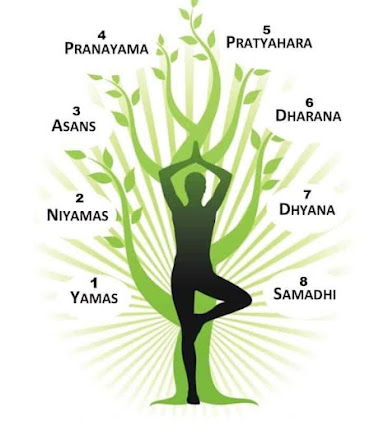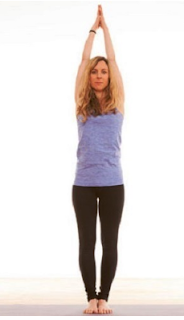Explore Ashtanga Vinyasa Yoga - Unveiling the Eight Limbs of Transformation
Explore Ashtanga Vinyasa Yoga: Unveiling the Eight Limbs of Transformation
Ashtanga Yoga is a dynamic and disciplined style of yoga rooted in ancient tradition. It encompasses a structured sequence of postures synchronized with controlled breathing techniques. Comprising eight interconnected limbs, it offers a holistic path to self-discovery and well-being, focusing on ethical principles, physical postures, breath control, withdrawal of senses, concentration, meditation, and ultimately, union with the self and the universe.
Where
did Ashtanga Yoga begin?
Ashtanga Yoga originated in India, tracing its roots back to the ancient sage Patanjali's Yoga Sutras. The practice was further developed and popularized by the renowned yoga teacher Sri K. Pattabhi Jois in the city of Mysore during the 20th century.
Eight
limbs of Ashtanga Yoga
1. Yamas: The Ethical Foundation
The journey into Ashtanga Yoga commences with the Yamas, the first limb that lays the groundwork for ethical living. These five moral restraints, including non-violence (Ahimsa), truthfulness (Satya), non-stealing (Asteya), moderation (Brahmacharya), and non-possessiveness (Aparigraha), offer a moral compass for interactions with the world and oneself.
2.
Niyamas: Cultivating Self-Discipline
The second limb, Niyamas, delves into self-discipline and personal observances. The five Niyamas—cleanliness (Saucha), contentment (Santosha), self-discipline (Tapas), self-study (Svadhyaya), and surrender to a higher power (Ishvara Pranidhana)—guide practitioners towards cultivating a balanced, harmonious inner world.
3.
Asana: The Physical Practice
Asana, the third limb, is the embodiment of physical postures that challenge, invigorate, and strengthen the body. Beyond mere flexibility, these postures prepare the practitioner's physical vessel for the deeper dimensions of the practice.
4.
Pranayama: Breath as Life Force
Pranayama, the fourth limb, is the science of breath control. Breathing is more than an automatic process; it is the bridge between body and mind. Through conscious manipulation of breath, practitioners unlock a wellspring of energy and a gateway to mindfulness.
5.
Pratyahara: Withdrawal of Senses
The fifth limb, Pratyahara, marks the transition from external to internal awareness. In a world saturated with stimuli, this limb teaches the art of withdrawing the senses from external distractions, fostering introspection and focus.
6.
Dharana: Concentration Unveiled
Dharana, the sixth limb, is the cultivation of focused concentration. By training the mind to dwell on a single point—be it an image, a sound, or a concept—practitioners develop mental resilience and clarity.
7.
Dhyana: The Meditative Flow
Dhyana, the seventh limb, transcends concentration to become meditation in its purest form. In this state, the mind is effortlessly absorbed in the object of focus, leading to a deep sense of tranquility and inner connection.
8.
Samadhi: Union and Transcendence
The final limb, Samadhi, represents the pinnacle of the Ashtanga Yoga journey. It is the state of union, where the practitioner dissolves the boundaries between self and universe, experiencing a profound sense of interconnectedness and transcendence.
Key benefits of Ashtanga Yoga
Ashtanga Yoga offers a plethora of benefits that contribute to physical, mental, and emotional well-being. Some key advantages include:
Strength
and Flexibility:
The dynamic sequences of Ashtanga Yoga cultivate muscular strength, endurance,
and flexibility, enhancing overall physical performance.
Stress
Reduction:
The synchronization of breath and movement promotes a meditative state,
reducing stress and promoting relaxation.
Mind-Body
Connection:
The focus on breath-movement coordination enhances mindfulness, fostering a
deeper connection between the mind and body.
Weight
Management:
Ashtanga Yoga burns calories and aids in weight management by engaging various
muscle groups.
Detoxification: Sweating
during practice aids in detoxification by eliminating toxins from the body.
Inner Peace: The meditative aspects of Ashtanga Yoga lead to a sense of inner tranquility and spiritual well-being.
Immune
System Boost:
The practice supports the immune system through stress reduction and improved
circulation.




Comments
Post a Comment